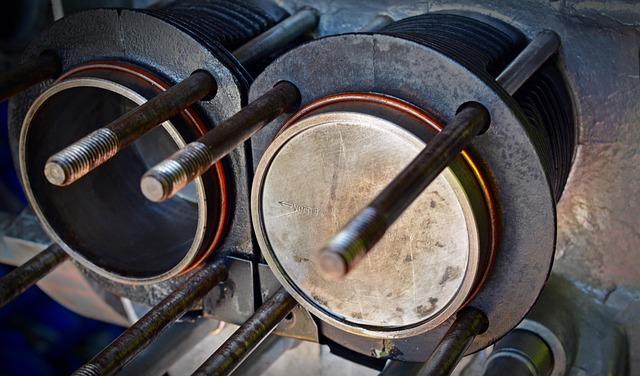Piston Crown The Heart of Efficient Combustion

The piston crown, though often overlooked, plays a crucial role in the performance and efficiency of an internal combustion engine. It’s the topmost part of the piston that directly interacts with combustion forces, and its design can significantly affect engine characteristics such as power, fuel efficiency, and emissions. In this blog, we will explore what the piston crown is, its function, types, materials, and why it’s so important in modern engine design.
What is a Piston Crown?
The piston crown is the top surface of a piston, which comes in direct contact with the combustion gases. It is exposed to extremely high pressures and temperatures during the combustion cycle. The shape and structure of the piston crown are carefully engineered to optimize combustion, minimize heat loss, and enhance the engine’s thermal efficiency.
Functions of the Piston Crown
-
Withstands Combustion Pressure: It must be strong enough to endure the intense pressure generated during ignition.
-
Heat Transfer: The crown helps transfer heat away from the combustion chamber to the piston body, then to the cylinder wall.
-
Combustion Optimization: Different crown shapes influence air-fuel mixture motion, helping achieve better combustion efficiency.
-
Sealing Function: It helps form part of the combustion chamber seal, along with the piston rings and cylinder walls.
Types of Piston Crowns
-
Flat Crown:
-
Simple and common in low-performance engines.
-
Offers balanced heat distribution.
-
-
Dished Crown:
-
Slight concavity improves mixture swirl and reduces compression ratio.
-
Often used in diesel engines.
-
-
Domed Crown:
-
Increases compression ratio for better power.
-
Common in high-performance or racing engines.
-
-
Re-entrant Bowl Crown:
-
Designed for advanced diesel combustion systems.
-
Helps optimize fuel-air mixing and reduce emissions.
-
Materials and Coatings
Because the piston crown faces extreme thermal and mechanical stress, it is usually made of forged or cast aluminum alloys for light weight and good heat conductivity. In heavy-duty or performance applications, steel pistons or ceramic-coated crowns are used to further enhance strength and thermal resistance.
Importance of Design
Modern engines are designed with precision-engineered piston crowns to meet strict emission regulations and fuel efficiency standards. Advanced simulation tools are used to design crown geometry for:
-
Efficient combustion
-
Reduced knock tendency
-
Lower fuel consumption
-
Compliance with emission norms
Common Issues and Maintenance
Over time, piston crowns can suffer from:
-
Thermal cracking
-
Carbon buildup
-
Erosion or pitting due to improper combustion or low-quality fuel
Regular maintenance, timely oil changes, and using quality fuel can help prolong piston life and prevent crown-related failures.
Conclusion
The piston crown is more than just the top part of a piston—it is a critical component that directly affects how efficiently and reliably an engine runs. With advances in materials and design, modern piston crowns help engines achieve better performance, lower emissions, and longer lifespans. Understanding its role gives us greater appreciation for the complex engineering inside every engine.
- Art
- Causes
- Crafts
- Dance
- Drinks
- Film
- Fitness
- Food
- Games
- Gardening
- Health
- Home
- Literature
- Music
- Networking
- Other
- Party
- Religion
- Shopping
- Sports
- Theater
- Wellness
- Script
- App
